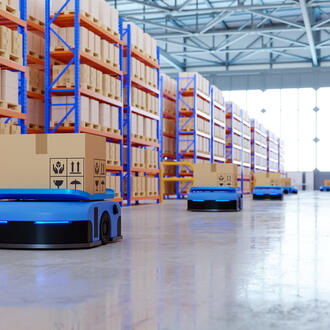Credit: iStock.com / Tisomboon
Ideas Made to Matter
Global electricity access is improving. But there’s a long way to go.
By
You flip a switch and the light goes on. You plug into a socket and charge your phone. One of the remarkable achievements of modern life is access to electricity, and it is an achievement that has yet to fulfill its potential.
“As of 2017, 840 million households across the world did not have access to electricity,” said Valerie Karplus, an assistant professor of global economics and management at MIT Sloan. “This is down from 1.7 billion that did not have electricity in 2000, and the number is expected to decline to about 675 million households by 2030.”
This trend, notes Karplus, gives reason to be optimistic, and a recent special issue of Economics of Energy & Environmental Policy, co-edited by Karplus and focused on electricity access, reflects much of this optimism. But 675 million is a substantial sum, and the road to universal access is neither short nor easy.
When it comes to providing electricity, technology is not the bottleneck. We understand how to move electrons from one place to another. “The fundamental way we do it hasn’t changed,” Karplus said. “Most of the unknowns are instead focused around questions of how to configure electricity systems in developing countries and mobilize public and private resources to support expanded access.” Several factors contribute to this challenge.
First, there is a common misconception that electricity access is a binary problem: either you suffer nightly in darkness or you have enough electricity to support a 3,000-square-foot house in the suburbs. “But there is a huge gap between these two,” Karplus said, and different communities or businesses may desire — and be willing to pay for — different levels of supply. Arriving at the best model and policy for electrification can be a highly specific and localized issue often complicated by a lack of data. Understanding customers can attract appropriate combinations of public and private finance to support connections with shared value. As Karplus and her co-editor, Christian von Hirschhausen from the Berlin University of Technology, write in their introduction, “the real challenges to access lie at the micro-level.”
A second difficulty is effectively mapping the social and political contexts into which new technologies are introduced. Karplus described a recent push in several parts of India to provide electricity to rural households. The effort focused on expanding the conventional electricity grid, which requires a lot of upfront capital but is often the most economical approach in the end. The result had been a massive revenue gap for distribution companies and intermittent and unreliable access for consumers. Why? There is strong local political pressure to keep power prices low, often below the cost of production, leaving distribution companies unable to recover investments. Durable solutions must take account of these political realities.
Finally, discerning the right approach to electrification is contingent on understanding individual consumers. How much electricity will one household use and how much will they pay for it? Does a grid connection or rooftop solar panel or some system in between make the most sense? Combining the assessment of this need with data-driven methods for assessing consumer creditworthiness could lead to right-sized solutions. Recognizing and pursuing intermediate steps to access is also important, as partial access is often a big improvement over no access at all.
675 million – expected households without electricity in 2030
Understanding these individual economics, Karplus said, is a challenge underestimated in the world of electricity access, but the sweeping application of big data and analysis offers intriguing potential. New machine learning algorithms are able to comb through household information and define the characteristics that help predict bankability.
“This data piece is really about understanding the needs and willingness to pay of each customer,” Karplus said. “Having this information allows you to more effectively target aid to some groups and find stable investments among others, effectively leveraging both public and private funding sources.”
When asked about surprising findings from her work on the special issue, Karplus noted two. First, she explained that we could electrify most of the world with minimal impact on carbon dioxide emissions: the households that need electricity demand very little, and, in many cases, solar could help to satisfy their demand given substantial drops in prices. Second, in terms of the absolute number of people without electricity, Africa is expected to make virtually no progress between now and 2030; population growth is outpacing electrification. Globally, this means that of the predicted 675 million people without electricity in 2030, 600 million of those will live in Africa.
“Although we’ve known this for some time, it’s a striking fact every time I hear it,” Karplus said. “I am hopeful that with a combination of targeted business models and sufficient broader institutional support, this challenge can be overcome.”



